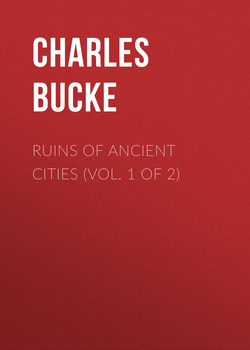Читать книгу Ruins of Ancient Cities (Vol. 1 of 2) - Charles Bucke - Страница 8
NO. VI. – ALBA LONGA
ОглавлениеIt has been stated, or rather speculated upon, that the entire history of this place is no other than a romance. By Dionysius of Halicarnassus, however, it is said to have existed four hundred and eighty-seven years; when, after having been the founder of thirty other Latin cities, it was destroyed by the Roman power.
That it existed, is also attested by the ruins that now remain. Its ancient characteristics are thus described by Dionysius: – it was so built, with regard to its mountain and lake, that it occupied a space between them, each serving like a wall of defence to the city.
It was long supposed to have been situated where Palazzuolo now is. Sir W. Gell says, "On passing up the new road, running from the dry bed of the river Albanus, where it crosses the Appian Way, near Bolerillæ, and leading to the Villa Torlonia, or Castel Gandolfo, a few ancient tombs were observed about half way up the ascent; and further examination showed, that these tombs had once bordered an ancient road, now almost obliterated. It was obvious, that such a road must have led from some place on the plain, to another on the mountain. Toward the sea, the high tower of Pratica (Lavinium) lay in the direct line of the road; and it seemed certain that the city on the mountain, to which it led, could have been no other than Alba Longa. Climbing upward among the bushes, ponderous blocks of stone were discovered, evidently the remains of the walls of this city. By a farther search, more were found. At a distance a small cavern was discovered; and not only the remains of a well, but part of a column of stone, two feet four inches in diameter. At a higher point the shore was covered with ruins, consisting of large blocks of rectangular stones, nearly buried in the soil, and scarcely discernible among the bushes."
There is a tradition, that the palaces of the kings of Alba stood on a rock; and so near to the edge of the precipice, that when the impiety of one of its monarchs provoked Jupiter to strike it with his lightning, a part of the mass was precipitated into the lake, carrying the impious king along with the ruins of his habitation. This tradition is apparently confirmed by a singular feature in a part of the remains of this city; for, directly under the rock of the citadel, toward the lake, and where the palace, both for security and prospect, would have been placed, is a cavern, fifty feet in depth, and more than one hundred in width; a part of the roof of which has evidently fallen in, and some of the blocks still remain on the spot9.
9
Dionysius of Halicarnassus; – Sir W. Gell.
